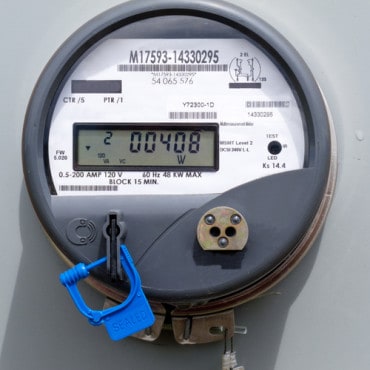
IoT disrupts commercial insurance through better data, faster claims, and simplified application procedures. It might also cover the uncoverable.
Despite recent efforts to modernize and digitize processes, the majority of the commercial insurance industry remains fairly steeped in tradition, with business owners relying on their brokers to find them the best coverage by going from one carrier to another.
Their often personal relationships with their brokers give them a sense of security and personalization, so they don’t question the fact that the process of buying insurance can last weeks. This is particularly true for business owners in some “traditional” industries, like real estate, law, and accounting.
Meanwhile, the ever-growing technology industry continues to introduce young businesses into the equation, all looking to revolutionize their prospective industries. For these young companies, the long, daunting process of purchasing business insurance in the traditional model doesn’t make sense.
And it’s not just startups. Many younger companies from all industries are looking for a more straightforward way to obtain their insurance coverage. This opened the door for the Internet of Things (IoT) and the digitization of the entire quoting and purchasing process.
IoT is a blanket term referring to the billions of physical devices around the globe intrinsically connected through the Internet. They therefore collect and share data between themselves freely and quickly.
The Internet of Things provides access to an immense amount of data across all connected devices. It strives to introduce changes to the traditional commercial insurance industry, which has proven to be slower to accept changes than the personal lines insurance industry.
Let’s talk about some of the potential advantages and disadvantages that IoT brings to commercial insurers and what it all means for both insurers and their clients.
The Benefits of IoT in Commercial Insurance Lines
With the entire world becoming increasingly digital and online-first, it was only a matter of time before online commercial insurance applications became a thing. IoT helps insurers build those applications, but it also helps build better insurance products for businesses. Buyers can easily look for necessary coverages from their connected devices when they want to purchase insurance policies. It is also much easier to file claims through a digitized process, meaning a lot less frustration for the insured.
Here are some of the benefits IoT brings to commercial insurance:
Better Rating Models and Accuracy
The insurance industry has always relied heavily on data to assess risk and determine rating models. Traditionally, insurers would collect information from policy administration and billing systems and build models based on that information. They would create broad risk groups and assign premiums to each group. Sometimes that meant that the rates were unnecessarily high for some companies.
Insurers would entertain the possibility of rate adjustments. However, it would all require additional data and more detailed calculations, which would further slow down the process.
With IoT ensuring the constant influx of information, this practice has changed significantly. Now underwriters can provide much more customized risk assessments and more equitable premiums. Since every business has its unique risk profile, it makes sense for underwriters to have access to all the necessary data. That access will allow them to design tailor-made policies that ensure each client has the right coverage based on their specific exposures.
With a more personalized approach, companies are able to get better coverage. They are also saving money since the process effectiveness and speed have increased, leading to better client satisfaction rates.
Simplified Purchasing and Claims Process
Traditionally, the process of buying insurance required reading dozens of pages describing insurance coverages written in a complicated vernacular littered with terminology that most laypeople just don’t understand.
Any changes meant going back and forth from the broker to the carrier to the client. In today’s fast-paced business environment, companies don’t want to waste weeks on the process of purchasing insurance when technology enables them to fill out an application online and get their quote in a matter of minutes.
IoT allows for the constant exchange and gathering of information that is essential to providing the best possible client experience. Connected systems should eliminate unnecessary data clusters and help people make more informed decisions.
However, what makes people especially frustrated about traditional insurance is the claims handling process. Managing policies and filing and tracking claims online through digital platforms is something that IoT has enabled.
Better Insurance Options for Emerging Industries
Drone and cannabis companies, for example, had a hard time finding an insurer to cover them before IoT emerged. These industries are still developing. Their landscapes constantly shift, making it difficult for traditional insurers to keep track of the regulations and risks they face.
Rapid data collection helps carriers design policies for emerging industries. Instead of waiting years to compile enough information to form rates for these companies, insurers can quote them like any other client. IoT allows them to keep up with the rapid changes in protocols and regulations that are synonymous with these industries.
Possible Issues with IoT in Insurance
The benefits IoT brings into the insurance industry are indisputable. However, there will inevitably be some issues that could arise with this rapid digitalization.
Data Management and Ownership
Insurance has always been data-based, but IoT has taken that to a whole new level. Insurers now face the challenge of creating data management systems to support their operations. This means procuring enough space to store gigabytes, even terabytes of data.
Of course, it is not enough to simply store the data. To harness the full potential of data, insurance companies need to figure out how to analyze and process it efficiently.
There is also the question of data ownership. It is not always entirely clear if the collected data belongs to the insurer, their clients, or both sides. The contract between the two parties should clearly state who owns the information and who is responsible for what information.
Data Privacy and Security
Clients must understand and consent to how their business and personal information is collected and used before the insurer starts processing that information. Both sides should be aware of the implications and agree on how to best handle all the confidential data.
No matter who owns the collected information, it is the insurance company’s responsibility to protect client data from any kind of cyberattack that could result in a data breach.
The rate at which cybercrimes are occurring continues to grow, making cybersecurity more important than ever. In order to take advantage of IoT, the insurance industry will need to make significant investments in data security systems and processes.
Establishing Trust
The whole IoT concept is still relatively new, which naturally causes people to have reservations about it. As already mentioned, the insurance industry is traditionally relationship-based. The trust clients have in their brokers is one of the main reasons they choose to buy and renew policies with them. All this implies that the industry alone is slow to accept technology that will change business models that need to be altered and improved.
However, the emergence of insurtech companies has introduced competition and a new alternative to traditional brokerages. This means that traditional brokers will need to find ways to adjust and remain competitive, especially if they want to attract and retain younger companies as clients.
Despite often targeting more tech-savvy companies, Insurtechs still need to ensure that their clients can fully trust emerging technologies. They must also try to replicate the “human” and personalized approach for companies that want to have a trusted advisor at their sides when necessary.
The Takeaway
IoT technology is inevitably finding its way into traditional industries and changing them.
The commercial insurance industry is not there yet. Customers should not expect the kind of buying experience they would get when purchasing personal lines insurance, which has already experienced a full digital revolution.
Still, it is up to the insurers to ensure they keep leveraging the power of data to provide exceptional customer service, with the hope that buying commercial lines will one day be just as easy, fast, and trustworthy a process as buying personal lines.
The sooner brokers and carriers adapt to a digital-first business model, the easier it will be to keep up with the pace of technological evolution that IoT has enabled and promotes.




























